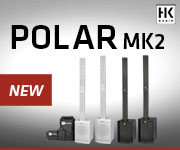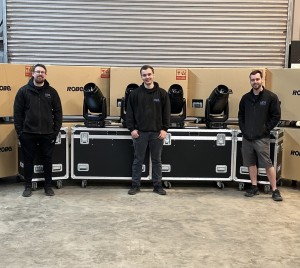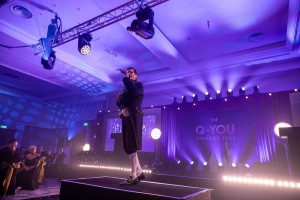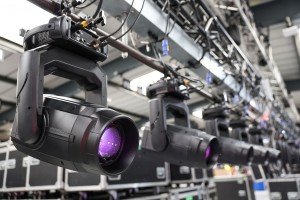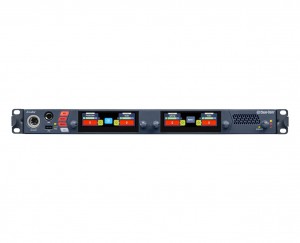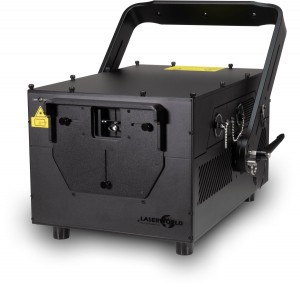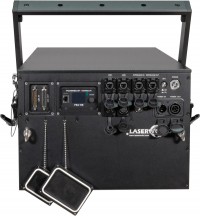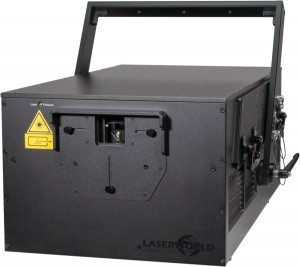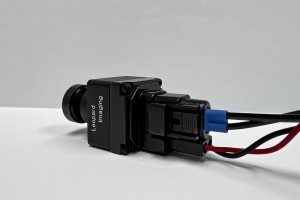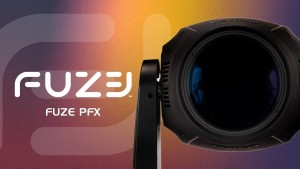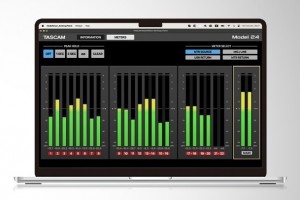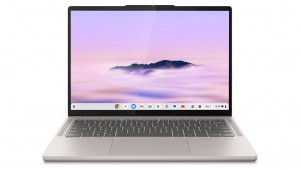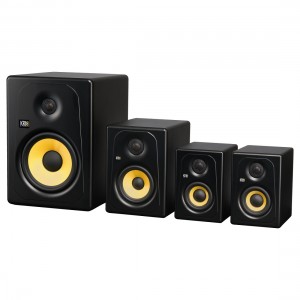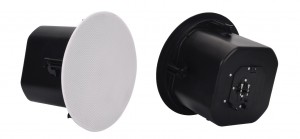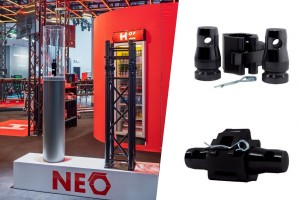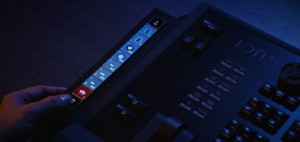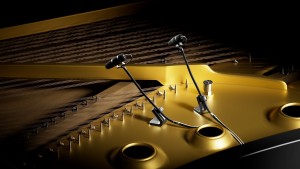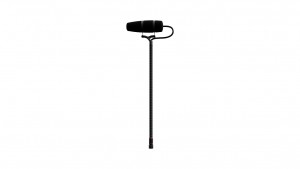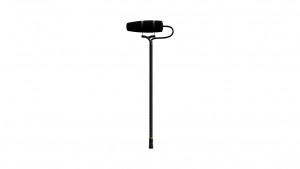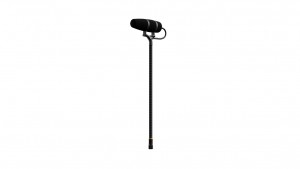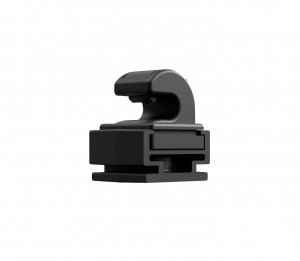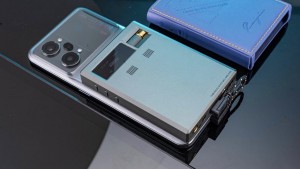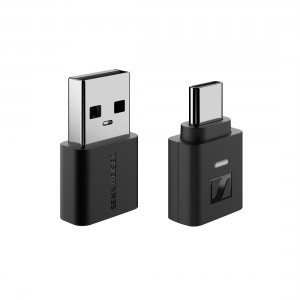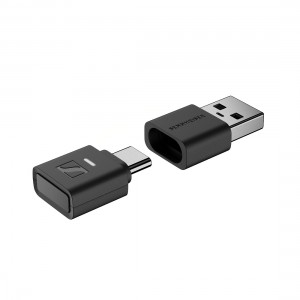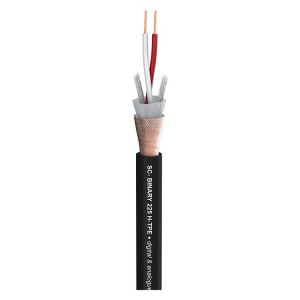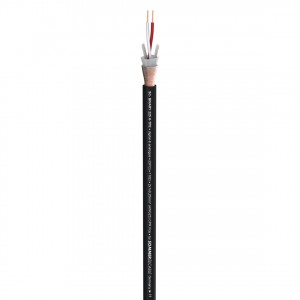Equipment News
Equipment News Schlagzeilen
Clear-Com-Update für Arcadia Central Station
08/07/2025
Dolby, Lenovo und Google bringen weltweit erstes Chromebook mit Dolby Atmos auf den Markt
25/06/2025
Neo-Truss-Verbinder von Hof erhältlich
17/06/2025
Punqtum launches Q310 Wall/Desktop Panel
12/06/2025
UK rental and production companies invest in Robe LedPointe
Robe’s new LedPointe moving light is blazing a trail of interest across the UK market with rental and production companies investing in this contemporary and more sustainable version of Robe’s original Pointe. LedPointe delivers 200.000 lux at a distance of five meters and has CMY colour mixing and a host of features to boost creativity. Six UK lighting companies share what motivated them to choose this white source luminaire which utilises Robe’s advanced TE 280 W HP (High Performance) White LED Transferable Engine.
South East England-based DPL recently added fifty-two LedPointes to their inventory. DPL supplies lighting, rigging, power distribution, dry hire, and production design across numerous sectors, and over the last thirty years has become a favourite for many festivals, concerts, and corporates. DPL production manager James Cobley says that with the original Pointe becoming a go-to beam luminaire for DPL, LedPointe “seemed like a natural step forward”. He highlights the classic Pointe features that have been incorporated into the LedPointe, “plus so many exciting new ones”. For DPL, the CMY colour mixing was a game changer, and Cobley thinks that Robe’s SpektraBeam feature will be a hit among LDs.
Farnborough, Hampshire-based Firebird Events’ head of production Will Coles says they were looking for a moving head spot light that could perform as well as their Robe T1 Profiles and was a bit more compact for smaller shows. “Changing up from the traditional discharge Pointe to LedPointe was a no-brainer decision for us”, he adds, commenting on the initial purchase of eight fixtures. The LedPointe’s continuous pan and SpektraBeam effect enthused the team as a way of getting new and different effects from traditional “gobo looks”. Firebird Events’ new LedPointes have been out on plenty of events including the “Q You Awards” for Q Hotels, staged at the Chesford Grange Hotel, Kenilworth (LD Nathan Wan).
Oliver Gee, MD of Bedford-based Red Event Production, which focuses on lighting corporates, awards shows, conferences, and outdoor work, have purchased twenty-four LedPointes that were supplied in both two and four-way flightcases. This was part of an upgrade to their existing lighting stock. They wanted a “go-to” precision fixture, “basically something to elevate the looks and style at drinks receptions, awards nights, gala dinners and other business events”, as Gee puts it. “We were looking for the next big thing, and the LedPointe seems to be it.” They had been on the lookout for some months, and all agreed that the start of a product lifecycle is also perfect timing for purchasing.
Stephen Lauchlan is the director of the S80 Group and works with his son Alex who is aged twelve and currently one of the UK’s youngest rising star LDs. They recently bought eight LedPointes and twelve SVB1s, and yet again, the SpektraBeam is a favourite LedPointe feature “due to the uniqueness and variety it offers over other fixtures in a light show”, confirms Lauchlan. SpektraBeam is an effects module with colours, patterns, shapes, etc. This multicoloured, multifaceted prism can be combined with the LedPointes second prism wheel to produce aerial effects. S80 Group’s LedPointes have already been used on corporate events with the Hilton Group, the National Museum of Scotland and at the EICC in Edinburgh.
Sam Tamplin, managing director of Basingstoke-based TSL, also states that the original Pointe had become a “proper benchmark” with LDs through its adaptability and multifunctionality. “We wanted to continue offering the latest version of this iconic fixture type in a new form factor and with CMY colour mixing”, he notes, underlining that the CMY is “a big step forward” from the original Pointe. TSL has enjoyed a long relationship with the Robe brand.
Veo Events purchased twenty-four LedPointes to have in the inventory to service their ongoing work, which is predominately in the corporate sector. CEO Liam Peake reckons that it is “a great multifunctional fixture for the application with multiple features, compact size, and manageable weight”. They have added the optional CRMX wireless kit to all the fixtures, which, together with the luminaire being an LED Spot, Beam, Wash and FX unit, means they can be quickly deployed, offering all that versatility from a single fixture. The Reading-based company has already used its LedPointes extensively for projects around London including the International Restaurateurs Dinner at The Rosewood; the St Georges Day Festival in Trafalgar Square; the Renewables Procurement & Revenue Summit conference staged at Tower Bridge together with several awards shows at The Roundhouse as well as the Audi Sponsor Tent at Henley Festival.
(Photos: DPL/Firebird Events/TSL)
Neue PatchMaster-Supreme-Patch-Kabel-Serie von Klotz erhältlich
Klotz AIS präsentiert das weltweit erste doppelt geschirmte Patch-Kabel mit ultrakompakten und wartungsfreien Steckern für eine Signalübertragung in Studioqualität. Der neue Boutique-Stecker wurde von Klotz eigens für die PatchMaster-Serie entwickelt. Dieser platzsparende, robuste und wartungsfreie Klinkenstecker mit vergoldeter Spitze wurde in Deutschland entwickelt und wird komplett von Hand im Klotz-Werk in Vilchband weiterverarbeitet.
Zur Herstellung des Steckers kommt eine eigens für diesen Zweck entwickelte Extrusionsmaschine zum Einsatz, die nach dem Erstellen aller Lötverbindungen im Niederdruck-Extrusionsverfahren einen Spezialkunststoff in das Gehäuse des Steckers aufbringt. Diese Fertigungstechnik ermöglicht einen extrem flachen Steckeraufbau. Das Verfahren schließt den Stecker dauerhaft Wasser- und Staubdicht ab und stellt eine effektive Zugentlastung dar, die in Labortests einer Belastung von über 310 Newton standhält.
Auch das verwendete Kabel der PatchMaster-Serie stellt ein Novum im Bereich Patchkabel dar. Es wurde von Grund auf im Hinblick auf Flexibilität, Abschirmung, Langlebigkeit und Übertragungsqualität für die Verwendung als Patchkabel konzipiert. Die Kombination aus leitender Kunststoffschicht und eng gewickeltem Kupfer-Wendelschirm ermöglicht eine doppelte Schirmung für störungsfreie Signalübertragungen. Die PatchMaster-Kabel sind die ersten doppelt geschirmten Patchkabel weltweit, die trotz ihres komplexen Aufbaus in runder Form flexibel zu verbauen sind.
Der Innenleiter besteht aus 99,9 Prozent sauerstofffreiem Kupfer (OFC). Die ultraniedrige Kapazität von 8,0 pF pro 10 cm (0,33 ft) ist ein direktes Resultat des speziellen Fertigungsprozesses. Das Kabel eignet sich vor allem zur Verkabelung komplexer und platzkritischer Pedalboards. Wie jedes Produkt von Klotz AIS werden auch die PatchMaster-Kabel Qualitätsprüfungen nach ISO 9001:2015 unterzogen.
(Fotos: Klotz AIS)
PSI Audio veröffentlicht neuen Dynamic Range Extender als Ergänzung zum Modell A226 Main
Die kürzlich veröffentlichten Hauptmonitore A226 Main von PSI Audio reichen bereits bis 20 Hz hinunter. Daher ist die neue Erweiterung kein Subwoofer im herkömmlichen Sinne, sondern fungiert als Dynamic Range Extender: Der PSI Audio A326 D-Rex ist als Ergänzung für die A226-Main-Monitore konzipiert.
Er arbeitet nicht wie herkömmliche Subwoofer, die in der Regel den Bassbereich nach unten erweitern, sondern als Dynamic Range Extender. Der A326 D-Rex besitzt drei 10-Zoll-Treiber, die einen Frequenzbereich von 20 Hz bis 100 Hz abdecken, ähnlich einem Subwoofer - den Unterschied macht das Zusammenspiel mit den A226 Main: Der A326 D-Rex bildet mit den A226 Main eine Einheit.
Der Dynamic Range Extender ist sowohl in der Frequenzwiedergabe als auch der Phase optimal auf die Lautsprecher abgestimmt - so, als ob beide Geräte ein einziges großes Wiedergabesystem wären. In Kombination liefert das System einen Schalldruck von bis zu 126 dB SPL Peak. Diese Kombination bildet eine hohe dynamische Transparenz, Klarheit und Druck in den tiefen Frequenzen ab.
Da alle PSI-Audio-Monitore voll kompatibel zueinander sind, können beliebige Lautsprechermodelle für große Setups miteinander kombiniert werden. Während es also möglich wäre, ein immersives Setup komplett mit den A226 Main und dem A326 D-Rex aufzubauen, kann es aus räumlichen oder anderen Gründen ratsam sein, eine Vielzahl von Lautsprechern zu verwenden: die A226 Main mit dem A326 D-Rex für vorn links und rechts und A21-M, A17-M oder A14-M für die Surround- und Deckenlautsprecher für ein immersives Abhörsystem.
Der A326 D-Rex wird in der PSI-Audio-Manufaktur in der Schweiz entwickelt und gebaut. Jeder Lautsprecher und Subwoofer wird einzeln im schalltoten Raum kalibriert, die entsprechenden individuellen Messkurven liegen den Produkten bei.
(Foto: PSI Audio/Audiowerk)
Clear-Com-Update für Arcadia Central Station
Clear-Com erweitert die Arcadia Central Station durch neue Software-Updates, welche die Funktionalität von Arcadia verbessern und sie laut Hersteller zur leistungsstärksten und flexibelsten 1HE-Intercom-Lösung auf dem Markt machen. Ab sofort unterstützt Arcadia das gesamte Clear-Com-Produktportfolio und ermöglicht die nahtlose Anbindung von Clear-Com-eigenen Produkten sowie Drittanbieter-Geräten über Dante und AES67.
Die neuesten Erweiterungen umfassen die Unterstützung von V-Serie-IrisX-Panels sowie eine flexible Portzuweisung. Nutzer können nun bis zu 32 IrisX-Panels der V-Serie direkt mit Arcadia verbinden; dies ermöglicht die Einbindung von Sprechstellen mit einer hohen Anzahl an Tasten, die bislang nur komplexeren Matrixsystemen vorbehalten waren. Mittels flexibler Portzuweisung können Anwender HelixNet- und I.V.-Direct-Verbindungen bedarfsgerecht aufteilen.
„Mit diesem Release entwickelt sich Arcadia über ein reines Partyline-System hinaus zu einem echten Kommunikations-Hub“, sagt Dave MacKinnon, VP of Product Management bei Clear-Com. „Es handelt sich um eine Kommunikationslösung, die mit den Anforderungen der Kunden mitwächst, sich in bestehende Infrastrukturen integrieren lässt und alles unterstützt, von Partyline bis hin zu IP-basierten Matrix-Sprechstellen - alles in einem einzigen 1HE-Gerät.“
(Foto: Clear-Com/Audio-Technica)
Laserworld präsentiert neue Purelight-IP65-Serie
Laserworld stellt eine neue Generation von Lasersystemen vor, die für den harten Außeneinsatz, etwa auf Festivals und anderen Großveranstaltungen, entwickelt wurden. Die neue Purelight-IP65-Serie umfasst Modelle von 5 bis 70 Watt Leistung mit IP65-Rating und hoher Robustheit.
Das Modell PL-5000RGB IP65 ist vor allem für Grafikprojektionen konzipiert. Das 5-Watt-System bietet eine Scan-Performance von 45 kpps @ 8° und einen Strahldurchmesser von 5 mm mit einer Divergenz von 0,9 mrad.
Das bereits etablierte Modell PL-30.000RGB IP65 für Festivals mittlerer bis großer Dimensionen wurde von Laserworld überarbeitet. Es ist mit 35 kpps @ 8° ebenfalls grafikfähig und mit einem Strahldurchmesser von 6,5 mm sowie einer Divergenz von 0,9 mrad ausgestattet.
Die Modelle PL-10.000RGB IP65 und PL-20.000RGB IP65 ergänzen die Purelight-Serie für kleinere bis mittlere Festivals.
Der PL-70.000RGB IP65 liefert hohe Leistung bei kompakter Bauweise und ist mit seinen 11 mm Strahldurchmesser bei einer Divergenz von 1,1 mrad auch über lange Distanzen gut sichtbar.
Alle Modelle der Purelight-IP65-Serie sind mit einem intelligenten ShowNet- oder einem FB4-Mainboard erhältlich. Anwender können die Lasersysteme direkt über Netzwerk mit verschiedenen Softwarelösungen verbinden. Das ShowNet-Mainboard ermöglicht Anwendern den Einsatz der Lasersysteme via DMX, Art-Net oder direkt mit kompatiblen Lasershow-, Video- und Multimediasoftware-Lösungen. Die Geräte der neuen Serie werden standardmäßig in einem wasserdichten Kunststoff-Flightcase geliefert.
(Fotos: Laserworld AG)
Panasonic to release new range of 4K-ready entry-level displays
Panasonic Projector & Display Corporation has announced the EQ3 Series of entry-level flat panel 4K displays, available in six sizes from 43’’ to 86’’, providing a solution for a variety of environments such as corporate meeting rooms and classrooms.
Each display features a 4K resolution of 3840 x 2160 pixels - four times higher than FHD displays - and brightness of 500 cd/m². The EQ3 Series uses an ADS wide-view panel, coated with a high haze treatment. This reduces glare in bright environments, delivering accurate and vivid colours, regardless of viewers’ position.
Available in 86’’, 75’’, 65’’, 55’’, 50’’, and 43’’ display sizes, the EQ3 Series is suitable for environments of any size. Each display can be installed in landscape or portrait orientation, tilted either forwards or backwards by up to 20°. The EQ3 Series is capable of operating for up to eighteen hours a day.
Each EQ3 Series features three HDMI inputs, with CEC support enabling users to operate basic functions on connected devices from the display’s remote control. It also features a built-in 4K USB Media Player, enabling users to seamlessly play content from a USB device.
The displays support external control via LAN or RS-232 (PJLink) and are also compatible with AMX D.D./Crestron Connected (V2) and Crestron XiO Cloud LAN Control for centralised remote network management.
The EQ3 Series of displays will be available from Q3 CY2025.
(Photo: Panasonic Connect Europe)
https://eu.connect.panasonic.com
Cambridge Audio bringt drahtlose Earbuds mit Wasserschutz und Noise-Cancelling heraus
Cambridge Audio stellt neue drahtlose Earbuds für den mobilen Musikgenuss vor: Der Melomania A100 erreicht bis zu elf Stunden Akkulaufzeit ohne Nachladen und bietet aktive Geräuschunterdrückung (ANC) sowie einen Wasserschutz nach IPX5. Angetrieben werden die 10-mm-Neodym-Treiber des A100 von einem Verstärker in echter Class-AB-Schaltung, wie man sie auch aus den Heim-Verstärkern von Cambridge Audio kennt. Musik kann über Bluetooth 5.4 zum A100 übertragen werden.
Der A100 unterstützt LDAC, aptX Lossless und AAC. Damit ist die Zuspielung von digitaler Musik in der höchstmöglichen Qualität des jeweiligen Zuspielgerätes garantiert. Zusätzlich verfügt der A100 über die von Cambridge neu entwickelte DynamEQ-Technologie, welche dafür sorgen soll, dass auch bei geringer Lautstärke Details intakt und ausgewogen bleiben.
Mit vollständig geladenem Akku erreicht der Melomania A100 bis zu elf Stunden ununterbrochener Wiedergabe, wenn ANC ausgeschaltet ist; mit Geräuschunterdrückung sind es 6,5 Stunden. Die flache, ergonomische Ladeschale bietet bis zu 28 weitere Stunden Nutzungsdauer. Mittels Schnellladefunktion können die Earbuds binnen zehn Minuten Ladezeit genug Energie für drei Betriebsstunden aufnehmen.
Der A100 verfügt über eine aktive Geräuschunterdrückung, die eine hybride Kombination aus Feed-Back- und Feed-Forward-Technologie mit externen Mikrofonen zur Überwachung der Umgebungsgeräusche und Mikrofonen im Gehörgang verwendet. Die insgesamt sechs Mikrofone pro Set sorgen zudem für Sprachverständlichkeit beim Telefonieren und Diktieren.
Bluetooth 5.4 mit seiner Multipoint-Option ermöglicht eine gleichzeitige Verbindung des Melomania A100 mit zwei smarten Devices. Nutzer können dadurch beispielsweise Musik vom Laptop oder Tablet hören, die Bedienung der App aber vom Smartphone aus vornehmen. Für eine möglichst passgenaue, geräuschisolierende Abdichtung bietet der A100 drei Größen von Silikon-Aufsätzen.
Der A100 klingt ab Werk wie eine klassische HiFi-Komponente aus dem Hause Cambridge Audio und bietet mithilfe der Melomania Connect App einen 7-Band-Equalizer an, um den Sound auf den Musikgeschmack von Nutzern und die Wahrnehmung der Ohren anzupassen. Sechs Voreinstellungen, die nach bestimmten Erfahrungswerten auf verschiedene Musikgenres zugeschnitten wurden, lassen sich durch individuelle Kurven ergänzen. Nutzer können diese frei einstellen, speichern und benennen. Alle Touch-Bedienelemente der Ohrhörer können über die Melomania Connect App individuell angepasst werden. In der App, die im Apple Appstore und im Google Playstore kostenlos erhältlich ist, kann auch die Zuordnung der Touch-Bedienelemente frei belegt werden.
Der Melomania A100 ist ab 26. Juni 2025 in den Farbvarianten Schwarz oder Weiß erhältlich.
(Fotos: Cambridge Audio)
Sonys Beta-Version von „Camera Verify” ermöglicht externe Weitergabe von Informationen zur Bildauthentifizierung via URL
Sony präsentiert die Beta-Version von „Camera Verify“, einer Lösung zur Authentifizierung von Kameras. Mit der neuen Version kann die externe Weitergabe von Informationen zur Bildauthentifizierung nun über eine spezielle URL erfolgen. Diese Funktion soll Bild- und Nachrichtenagenturen dabei unterstützen, die wachsende Herausforderung beim Authentifizieren digitaler Bilder im KI-Zeitalter zu bewältigen.
Weil KI-generierte und manipulierte Inhalte immer ausgefeilter werden, ist der Bedarf an vertrauenswürdigen, überprüfbaren Bildern größer denn je, insbesondere für Medienprofis. Die Camera Authenticity Solution von Sony wurde entwickelt, um diesen Anforderungen gerecht zu werden. Dabei werden C2PA-Signaturen (Coalition for Content Provenance and Authenticity) und die proprietären 3D-Tiefeninformationen von Sony direkt zum Zeitpunkt der Aufnahme in das Bild eingebettet.
Die Authentizitätsinformationen des Bildes können auf der Bildvalidierungswebsite überprüft werden. Mit der neu hinzugefügten Funktion „Camera Verify“ (Beta) können Nachrichtenagenturen nun externe URLs für Bilder mit eingebetteten digitalen Signaturen herausgeben. So können Dritte die Verifizierungsergebnisse über zuverlässige URLs einsehen, die direkt von der Verifizierungswebsite ausgegeben werden. Mit dieser Funktion können Organisationen bestimmte Authentizitätsmerkmale auswählen, die während des Veröffentlichungs- und Verbreitungsprozesses von Inhalten geteilt werden sollen. Das beschleunigt das Veröffentlichen glaubwürdiger und überprüfbarer Inhalte.
Darüber hinaus kann die Digital Signature License, mit der digitale Signaturen direkt in mit unterstützten Sony-Kameras aufgenommene Bilder eingebettet werden können, jetzt über die Creators’-Cloud-Website erworben werden. Das erweitert die Zugänglichkeit für mehr Fachleute.
Sony plant, die Unterstützung für Videoinhalte nach dem Herbst 2025 im Rahmen seines Engagements für die Förderung vertrauenswürdiger digitaler Medien auszuweiten. Neben seinen Aktivitäten im C2PA-Lenkungsausschuss sei das Unternehmen bestrebt, die Zuverlässigkeit von Inhalten im Medienbereich weiter zu verbessern.
(Foto: Sony)
KD kooperiert mit Leopard Imaging und Corning Incorporated für IEEE-802.3cz-konforme Multigigabit-Vision-Systemlösung
Das Fabless-Halbleiterunternehmen KD meldet die erste Implementierung seines optischen 10GBase-AU-Transceivers KD7251 in die LI-Venus-ISX031-Base-AU, eine optische Multigigabit-Kamera für den Automobilbereich von Leopard Imaging, einem Anbieter von Embedded Vision und KI-Kameratechnologie.
Corning Incorporated hat ein hybrides Kabel- und Steckersystem entwickelt, das auf Cornings Kabeln und Steckern in Automobilqualität basiert. Das neue System bietet eine skalierbare Datenkommunikation mit bis zu 10 Gbit/s durch das Upgrade des bestehenden Weitwinkel-Kamerasystems von einer herkömmlichen GMSL2-Kupferschnittstelle auf eine Glasfaser-basierte 10GBase-AU-Verbindung, die konform zum IEEE-802.3cz-Standard ist. Damit steht eine zukunftsfähige Lösung bereit, welche die Anforderungen an das Netzwerk in Fahrzeug-Anwendungen wie autonomem Fahren, Fahrerassistenz (ADAS), digitaler Videoaufzeichnung und industrieller Bildverarbeitung erfüllt.
„Wir haben unseren optischen Transceiver KD7251 erfolgreich in die LI-Venus-ISX031-Base-AU-Kamera von Leopard Imaging integriert. Dieser Durchbruch zeigt die Funktionsfähigkeit unseres KD7251-Transceivers in kompakten Automobil-Kameramodulen (Leiterplatte unter 20 x 20 mm) bei gleichzeitig größeren Entfernungen von bis zu 40 Metern“, sagt David Sanchez, Hardware-Designer bei KD und Projektleiter der technologischen Zusammenarbeit. „Der Einsatz von Glasfaser beseitigt die Probleme der elektromagnetischen Verträglichkeit (EMV), reduziert das Kabelgewicht und unterstützt asymmetrische Verbindungsgeschwindigkeiten für optimierten Stromverbrauch. Damit ist diese Innovation wesentlich für zukünftige Fahrzeugnetzwerke, bei denen eine hohe Bandbreite, geringe Latenz und Interferenz-freie Datenverbindungen entscheidend sind.“
Mit der neuen optischen Verbindung unterstützt die LI-Venus-ISX031-Base-AU-Kamera eine höhere Datenübertragung, höhere Auflösung und größere Bildtiefe. Mit dem Austausch der Kupferschnittstelle durch den optischen Transceiver KD7251 steigt die Konnektivität im Fahrzeug erheblich von 3 Gbit/s auf bis zu 10 Gbit/s.
Die Kamera wiegt 162 Gramm. Sie ist mit dem Sony-Diagonal-7,45-mm-(Typ 1/2.42)-CMOS-Bildsensor ISX031 ausgestattet und eignet sich für den Einsatz in einem Surround-View-System. Die Integration des Kabel- und Steckersystems von Corning ermöglicht einen verbesserten Zugang zu komplexen Positionen, wie etwa im Innern eines Seitenspiegels. Darüber hinaus erlaubt das neue Kamerasystem Kabellängen von bis zu 40 Metern ohne Qualitätsverlust bei der Datenübertragung.
(Foto: KD)
Elation launches compact Fuze PFX for profile and FX lighting
The newest addition to Elation’s Fuze series, the Fuze PFX, brings the power and versatility of a multi-purpose automated fixture - now in a very compact footprint. Designed to deliver serious output and feature-rich flexibility in a smaller package, the Fuze PFX is designed for both production and installation environments.
It combines the precision of a profile fixture with the creative potential of an effects light. The Fuze PFX delivers over 15,000 lumens of output and can handle everything from tight beams and precise framing to expansive washes. With its 400 W white LED engine and the compact and lightweight form factor, the Fuze PFX is suitable for fast-paced productions, touring rigs, and discreet installations alike.
The Fuze PFX includes eighteen gobos (seven rotating and eleven fixed) and a zoom range from 3° to 53°, enabling mid-air effects and crisp image projections. Its two variable frost filters (Light and Wash) allow for even stage washes, while the seamless CMY color mixing with linear CTO correction provides a broad color palette. An 8-position color wheel features high CRI filters (80, 90) and a UV filter for additional flexibility.
The rotatable full-blackout framing blades offer precise beam shaping and enable users to isolate areas on stage, highlight scenic elements, or produce dynamic mid-air visuals. Dual independent rotating prisms (6-facet linear and 6-facet round) can be used together for layered effects, while a fast iris and the split CMY SFX wheel expand the creative toolkit. Additional features include a high-speed electronic shutter, strobe, and multiple 16-bit dimming curve modes for programming.
With its output and whisper-quiet operation, the Fuze PFX is designed for various environments, including theaters, TV studios, and houses of worship. It also comes fully equipped with the professional control features today’s designers expect.
(Photo: Elation)
Tascam erweitert Mixer der Model-Serie um Meter-Bridge-App
Tascam hat die Veröffentlichung einer Meter-Bridge-App für seine Aufnahmemischpulte Model 12, Model 16 und Model 24 bekanntgegeben. Die App ist als Teil eines kostenlosen Software- und Firmware-Updates erhältlich und ermöglicht es, große Pegelanzeigen direkt auf einem angeschlossenen Computer darzustellen.
Die neue Anwendung für die Pegelüberwachung wurde erstmals mit der Veröffentlichung des Model 2400 und der Studio Bridge eingeführt, beides 24-Spur-Recorder und USB-Audiointerfaces mit MIDI-Funktionalität. Durch ein Firmware-Update und die Installation der aktuellen Version 2.20 des Einstellungsfelds können nun auch Nutzer der Aufnahmemischer Model 12, Model 16 und Model 24 von dieser Funktion profitieren, die das Monitoring von Kanälen und Spuren erleichtert.
Die Meter Bridge kann entweder Kanaleingänge, Live-Eingänge, von einem PC zurückgegebene Kanäle oder aufgenommene Spuren anzeigen. Eine Peak-Hold-Funktion mit wählbarer Haltezeit ist ebenfalls vorhanden. Die neue Firmware für jedes Produkt und das „Model Mixer Settings Panel“ können unter www.tascam.eu/de/downloads heruntergeladen werden.
(Fotos: Tascam/TEAC Europe GmbH)
Dolby, Lenovo und Google bringen weltweit erstes Chromebook mit Dolby Atmos auf den Markt
Dolby Laboratories, Lenovo und Google stellen das neue Lenovo Chromebook Plus (14’’, 10) vor, das weltweit erste Chromebook mit Dolby Atmos. Dieses Gerät soll eine neue Ära von immersivem Audio auf Chromebooks einläuten und Sound für Verbraucher noch zugänglicher machen.
Dolby Atmos zielt darauf ab, Hörer mitten ins Geschehen zu versetzen, mit immersivem Klang, der über und um die Personen herum fließt. Dabei spielt es keine Rolle, ob Kopfhörer oder Laptop-Lautsprecher verwendet werden.
„Das Chromebook Plus ist ein wichtiger Meilenstein in unserer langjährigen Zusammenarbeit mit Dolby“, sagt Benny Zhang, Executive Director und General Manager of Chromebooks in der Intelligent Devices Group von Lenovo. John Maletis, VP of ChromeOS Product bei Google, ergänzt: „Unsere Priorität bei der Weiterentwicklung der Chromebook-Produktreihe ist es, außergewöhnliche Leistung und Erlebnisse zu bieten. Dolby ist ein unschätzbarer Partner auf dieser Reise.“
(Foto: Dolby Laboratories/Google/Lenovo)
KRK launches new two-way studio reference monitors
KRK introduces the Kreate Series Studio Monitors, the newest addition to the brand’s range of audio offerings, addressing musicians, engineers, producers, and content creators. These two-way studio monitors are designed specifically to meet the diverse needs of creatives, from casual playback to professional music and content production.
Suitable for mixing, producing, and content creation, the Kreate monitors offer wireless audio streaming capabilities with a pairable Bluetooth audio input alongside balanced and unbalanced analog inputs. They also have a universal voltage, switch mode power supply for seamless global operations.
Available in three sizes - three, five, and eight-inch - these entry-level active studio reference monitors feature a wide bandwidth, boundary and tuning EQs, new transducer designs, and Class D amplification. The Kreate Series also features acoustic boundary correction and tuning EQ combinations to help minimize and correct acoustic environment problems and dial in the voicing to meet specific application needs.
With KRK Kreate, composite woven glass fiber cone woofers provide dynamics with damping and deeper modal control to deliver tight and punchy mid- and low-frequency response. The glass fiber structure is heat-resistant and features a high strength-to-weight ratio, ensuring the monitors are highly adaptable and sonically accurate.
Additionally, high-frequency reproduction emanates from a woven-textile dome tweeter with a neodymium motor, which accurately extends the frequency range out to 40 kHz in the KRK Kreate 8 and 5 options, and up to 33 kHz in the 3 option, for a smoother, more detailed sound profile. The textile dome tweeters are used to create a smooth accurate response.
Furthermore, the system-tuning level control and low-frequency and high-frequency shelving filters allow for adjustment in various acoustic conditions. Hybrid Class D and Class AB amplification delivers power and headroom. The transducers are optimized for improved response and accuracy. For maximum transient response and dynamics reproduction, the amplifiers drive the transducers efficiently at reduced operating temperatures to ensure audio integrity during long work sessions.
The monitors are launching in KRK’s signature black/yellow style, as well as a latte/black color scheme (arriving this fall), with the Kreate 3 models sold as a pair and the Kreate 5 and Kreate 8 options priced individually. The series also continues KRK’s visual branding evolution, with packaging and stylization that closely align with other monitors from the brand’s product portfolio.
(Photo: KRK)
Lightware’s Lara Wizard helps integrators simplify audio-visual room automation with no coding required
Lightware’s Lara Wizard is designed to accelerate the set-up of audio-visual (AV) room automation and control configurations, ensuring anyone, from systems integrators to IT teams, can achieve their desired system configuration in minutes.
Lara is Lightware’s built-in room automation platform, which simplifies AV system control in meeting spaces. Pre-integrated into Lightware’s core products, it empowers users to design, deploy and manage professional AV systems quickly and efficiently. A key part of this efficiency is the Lara Wizard interface. This online service is the quickest way for users to get started, delivering reliable room control without writing a single line of code.
Designed for AV users, IT admins and integrators at all levels, Lara Wizard walks the user through key decisions and predefined device selections, creating a working configuration in a matter of minutes. Just a few guided questions bring professionals to room automation and video conference system integrations.
For set-up, users select the room type and set up needs, and the Lara Wizard will generate a configuration file. Once this file is uploaded to a compatible Lightware device, the system is ready to be used as desired. Integrators also have the option to further finetune the configuration in the Lara Editor. Current supported devices include the complete Taurus UCX series, the MMX2 series, Taurus TPN and Taurus TPX.
Integrator partners who use Lara can join the Lara Wizard Early Access Program, gaining access to exclusive features, content and updates. Feedback is also welcome, so the Lightware development team can continue offering updates.
Alfatron introduces new Dante ceiling speakers
Alfatron Electronics introduces the ALFC-657D full-range, 6-inch Dante ceiling speakers. Sold in pairs as one Master speaker (ALFC-657-DM) with a built-in 2 x 30 W POE (Power Over Ethernet) amplifier outfitted with a 2-channel Dante Input, and one Slave speaker (ALFC-657-DS) equipped with a Phoenix input, the new ALFC-657D ceiling speakers are designed for use in distributed sound reinforcement applications.
The ALFC-657D speakers use a flush-mounted design that enables them to blend into a wide range of environments. The Master speaker provides an amplified speaker output to drive the Slave speaker. Each pair of ALFC-657-D speakers are powered via the network POE switch. The system utilizes a 2-way, full-range loudspeaker design with a coaxial HF transducer.
The 6.5-inch woofer features a moisture/water-proof composite diaphragm. The ALFC-657D also offers a 1-inch silk dome tweeter with an adjustable angle, and a wide, flat frequency response ranging from 65 Hz to 20 KHz. The system has a high maximum SPL output of 111 dB. The ALFC-657D speakers are expected to be available August 2025.
(Photo: Alfatron Electronics)
Neues Aktiv-Bändchenmikrofon von Royer angekündigt
Royer Labs stellt mit dem R-12 ein neues Aktiv-Bändchenmikrofon für Studioaufnahmen und Live-Anwendungen vor. Für die Vielseitigkeit des R-12 sorgen unter anderem integrierte Bass-Cut- und Pad-Schalter. Damit eignet sich das Mikro für die Aufnahme von elektrischen und akustischen Saiteninstrumenten, Gesang, Blechbläsern, Klavieren und Orgeln sowie Schlag- und Percussion-Instrumenten.
Das R-12 verwendet das gleiche 2,5-Mikron-Bändchen wie das Modell R-121. Dies sorgt für Festigkeit gegenüber hohen Schalldruckpegeln (SPL) von bis zu 160 dB. Mit einem zuschaltbaren -15-dB-Pad bietet das R-12 genügend Headroom für lautere Signale wie Drums und E-Gitarren, um Verzerrungen zu vermeiden. Die aktive Elektronik des R-12 ermöglicht einen erhöhten Ausgangspegel auch bei leisen Klangquellen, wie akustischen Instrumenten und Gesang. Sie sorgt für eine konstante Belastung des Bändchens.
Durch Aktivieren des umschaltbaren -15-dB-Pads des R-12 sinkt der Ausgangspegel des Mikrofons auf den Wert des nicht phantomgespeisten Bändchenmikrofons R-10 von Royer, was für lautere Instrumente wie Schlagzeug und laute E-Gitarren, bei denen mehr Headroom erforderlich ist, vorteilhaft ist. Auch bei sehr lauten Klangquellen treten laut Hersteller keine headroombedingten Verzerrungen auf.
Das R-12 ist mit einem zuschaltbaren Hochpassfilter ausgestattet, um Nahbesprechungseffekte bei der Aufnahme von lauten Signalquellen zu reduzieren. Das Bändchen des R-12 ist intern elastisch aufgehängt. Zusammen mit dem integrierten dreilagigen Windschutz ist es wirksam gegen Plosivlaute und Windgeräusche geschützt.
„Das R-12 basiert auf unserem passiven Bändchenmikrofon R-10, das in Studios auf der ganzen Welt eingesetzt wird und seit Jahren im Live-Setup von Dave Grohl zu finden ist“, sagt John Jennings, Präsident von Royer Labs. „Außerdem enthält es eine aktive Schaltung auf Basis der Technologie, die in unseren höherpreisigen Modellen zum Einsatz kommt.“
Das R-12 und die Mikrofonhalterung werden in einem Hartschalenkoffer geliefert. Die Erstauslieferung an den autorisierten Fachhandel wird für August 2025 erwartet. Das R-12 ist auch als Matched Pair erhältlich.
(Foto: Royer Labs/S.E.A.)
Neo-Truss-Verbinder von Hof erhältlich
Unter dem Namen Neo-Truss-Verbinder bringt Hof neue Tools für Konusverbindertraversen auf den Markt, die mittels speziellem Klicksystem der Klammer einen schnelleren Auf- und Abbau ermöglichen sollen.
Hämmern der Trusspins (und im Worst Case Verkeilen der Trusspins in Traverse und Verbinder) entfällt, da mit den Neo-Truss-Verbindern keine Trusspins mehr benötigt werden. Somit können die Traversen direkt vor Ort an lärmempfindlichen Veranstaltungsorten, wie zum Beispiel Konferenzräumen, Hotels oder Innenstädten, auch bei Nacht aufgebaut werden.
Zudem können die Neo-Truss-Verbinder beim Transport in der Truss bleiben. Auf der Baustelle muss lediglich die Neo-Truss-Klammer um den Verbinder gelegt und geschlossen werden. Aufgrund der Klammer und des Wegfalls der Trusspins ist ein signifikant geringerer Kraftaufwand nötig, um die Traversen miteinander zu verbinden oder abzubauen.
Die Neo-Truss-Verbinder sind in Schwarz und Silber sowohl für Hof-Konusverbindertraversen als auch für Konusverbindertraversen anderer Hersteller erhältlich.
(Foto: Hof)
Tascams Sonicview-Konsolen erhalten Verbesserungen bei Workflow und Steuerung
Tascam hat die Firmware-Version 2.2 für seine digitalen Misch- und Aufnahmekonsolen Sonicview 16 und Sonicview 24 veröffentlicht, die neben neuen Funktionen auch die Steuerungsmöglichkeiten erweitert.
Das Update verbessert die Kompatibilität mit dem Ember+-Protokoll, was eine umfassendere Steuerung der Parameter und eine flexiblere, zentralisierte Systemintegration für Broadcaster und AV-Profis ermöglicht.
Die geplante Integration mit der neuen App „Mixing Station“, die für den Sommer 2025 erwartet wird, soll es Darstellern ermöglichen, ihre Monitormischungen über iOS- und Android-Geräte zu verwalten und damit ihre Abhängigkeit von FOH- oder Monitortechnikern in Live-Settings zu verringern.
Mit Version 2.2 kommt zudem eine neue Routing-Matrix-Seite hinzu, die eine grafische Darstellung des gesamten Eingangs-/Ausgangs-Routings bietet, um das Signalmanagement über die gesamte Konsole hinweg zu vereinfachen.
Die User-Key-Funktionalität wurde um bis zu 64 zusätzliche Tasten auf dem LCD-Bildschirm sowie um eine neue Bibliothek für benutzerdefinierte Bedienelemente erweitert. Damit lassen sich mehrere individuelle Konfigurationen für User Keys, GPIOs und Fußschalter speichern und abrufen.
Zu den Verbesserungen gehören außerdem das direkte Routing zwischen Ein- und Ausgangsports sowie die neue Möglichkeit, in einem Modul zwischen zwei Eingangsquellen zu wechseln (Input Source A/B). Darüber hinaus hat Tascam über zwanzig zusätzliche Funktionen implementiert, die den Arbeitsablauf und die Benutzerfreundlichkeit in Live-Sound-, Broadcast- und Installationsumgebungen verbessern sollen.
Das Firmware-Update v2.2 für Sonicview kann unter www.tascam.eu/de/downloads heruntergeladen werden.
(Foto: Tascam/TEAC Europe GmbH)
ETC erweitert Eos-Welt um TK 10 und Eos v3.2.11
ETC präsentiert mit TK 10 eine weitere Ergänzung des Eos-Programmierzubehörs. TK 10 bietet Benutzern die volle Leistung der Apex Target Keys im tragbaren Format; kompatibel mit allen Geräten der Eos-Familie (ab Eos v3.2.11), ermöglicht TK 10 eine individuell abgestimmte Einrichtung.
Mit seinen 3D-druckbaren Clip-On-Zubehörteilen eignet sich TK 10 als Erweiterung für ETCnomad und einer Eos-Konsole. Mit zehn integrierten Anzeigetasten erhält TK 10 Strom und Daten über ein einziges USB-Kabel; hinzugefügte Beschriftungen, Bilder und Navigationselemente ermöglichen eine individuell gestaltete Plattform.
Das TK 10 ist sowohl in einer tragbaren, für mobile Anwendungen konzipierten Version erhältlich als auch in einer 1HE-19-Zoll-Version zum Schrankeinbau (etwa für Kommunikationsracks oder Benutzer, die Eos-Funktionen aktivieren möchten, ohne über die vollständige Benutzeroberfläche navigieren zu müssen).
Gemeinsam mit dem TK 10 veröffentlicht ETC die neueste Version der Eos-Family-Software, v3.2.11. Das Software-Update unterstützt bereits TK 10 und bietet einige weitere Verbesserungen, beispielsweise bei den Eos Magic Sheets, der Auswahl von Objektparametern und -kategorien und bei der Synchronisation und Stabilität von Multi-Konsolen.
(Foto: ETC)
Punqtum launches Q310 Wall/Desktop Panel
Punqtum, a Riedel Communications brand, has added the Q310 Wall/Desktop Panel to its portfolio. The Q310 is a 2-channel intercom outstation designed to be installed in any kind of venue or facility that stages live events and integrates into an existing Punqtum portfolio.
Whether wall-mounted for permanent setups or used as a portable desktop device with its extendable feet, the Q310 is suitable for theater productions, live events, broadcast operations, and event management.
Features such as daisy chaining several devices via PoE, programmable buttons for paging announcements, microphone mute and individual volume controls, allow users to tailor their communication experience to meet real-time demands. Equipped with a built-in loudspeaker, microphone and headset connectors, the new Wall/Desktop Panel serves a diverse range of applications.
It is powered via a PoE switch or Punqtum’s own speaker station, and includes GPIO for event-driven actions, such as cueing lights or making remote announcements. The Q310 brings communication and integrated automation to any professional workflow.
(Photo: Punqtum)
DPA präsentiert verbessertes Instrumentenmikrofon 4099 Core+
DPA Microphones stellt mit der Markteinführung des 4099 Core+ die nächste Generation seines Instrumentenmikrofons 4099 vor. Das 4099 Core+ verfügt über die Core+-by-DPA-Technologie, die Verzerrungen über den gesamten Dynamikbereich des Mikrofons neutralisiert, und bietet einen um 10 dB erweiterten Dynamikumfang sowie einen deutlich höheren Clipping-Punkt gegenüber dem bisherigen Modell.
Die zum Patent angemeldete Core+-by-DPA-Technologie beseitigt die typischen Nichtlinearitäten, die durch Membran und Elektronik eines Mikrofons entstehen. Wie alle Mikrofone der Core+-by-DPA-Serie verfügt auch das 4099 Core+ über den neuen MicroLock-Steckverbinder, eine robuste Lösung für hohe Verbindungsstabilität. In Kombination mit einer weiterentwickelten Schwanenhalshalterung und verbessertem Windschutz ist das Mikrofonsystem jetzt robuster und variabler denn je.
Zusätzlich zur Integration der Core+-by-DPA-Technologie hat DPA Microphones ein neu konzipiertes Halterungssystem entwickelt, das eine sichere Anwendung über eine große Bandbreite von Instrumenten hinweg ermöglicht. Der neue Gooseneck Mount (G-Mount) verfügt über einen zweistufigen Verriegelungsmechanismus, der eine präzise, einhändige Mikrofonpositionierung erlaubt und gleichzeitig die Vibrationsisolierung sowie die Gesamtstabilität verbessert.
Der neue G-Mount ist rückwärtskompatibel mit vielen bestehenden DPA-Clips. Ausgewählte Clips - etwa für Cello, Klavier oder Mikrofonstative - wurden für das G-Mount-System überarbeitet, um den Bedienkomfort und die Anpassungsfähigkeit zu optimieren. Neu im Sortiment ist zudem der XLR-Mount, der es erlaubt, sowohl 19-mm-Stäbchenmikrofone als auch XLR-Adapter direkt zu montieren.
(Fotos: DPA Microphones)
Cayin präsentiert kompakten USB-DAC mit Röhren-Verstärker
Der neue USB-DAC RU9 ist das bisher kompakteste Produkt von Cayin, in das die Vakuumröhre Nutube 6P1 integriert wird. HiFi-Enthusiasten bietet der RU9 mit seinen AK4493-DACs von AKM im Dual-Mono-Aufbau und dem Verstärker mit Röhrenunterstützung eine Möglichkeit, die Klangqualität und Dynamik angeschlossener Kopfhörer zu verbessern. Vor allem im Zusammenspiel mit Hi-Res-Audiofiles ist die Steigerung der Auflösung und Präzision laut Hersteller deutlich wahrnehmbar.
Ist der RU9 zwischen Quellgerät und Kopfhörer eingebunden, wandelt der DAC die digitalen Audiostreams in analoge, und damit für Kopfhörer verwertbare, Audiosignale um. Diese können an die unsymmetrischen 3,5-mm-Klinkenbuchsen angeschlossen werden. Um abermals die Leistungsfähigkeit und Klangqualität hochwertiger Kopfhörer zu steigern, bietet der RU9 auch einen symmetrischen Anschluss in 4,4-mm-Bauweise an.
Der RU9 zeigt in seinem Display unter anderem die gewählte Lautstärke, die Anschlussart (symmetrisch/unsymmetrisch), die DAC-Auflösung und den Ladezustand des integrierten Akkus an. Seitlich liegende Tasten erlauben die Bedienung des RU9 und eine schnelle Anpassung der Klangfarbe der eingesetzten Vakuumröhre. Über die Lautstärkewalze auf der Gerätefront des RU9 wird der Grad der Verstärkung eingestellt.
Der RU9 verfügt über diverse Anschlussmöglichkeiten. Dabei besteht die Möglichkeit, jeden Ausgang zwischen Röhren- und Halbleitermodus umzuschalten. Drei Klangprofile stehen zur Auswahl: „Klassisch“, „Modern“ und „Solid State“. Nutzer können so zwischen klassischem Röhrensound und einer neutraleren Klangcharakteristik wählen.
Der RU9 unterstützt hochauflösende Bluetooth-Übertragung inklusive LDAC sowie weiterer HD-Streaming-Formate. Als USB-Audio-DAC bietet er sowohl UAC1.0- als auch UAC2.0-Kompatibilität und lässt sich mit Smartphones, Computern, Tablets, digitalen Audioplayern und Spielekonsolen verbinden. Das CNC-gefräste Metallgehäuse des RU9 misst 100 x 70 x 15 Millimeter, bei einem Gewicht von 150 Gramm. Der 2000-mAh-Lithium-Akku ermöglicht eine Betriebsdauer von nahezu fünf Stunden. Mittels magnetischer Rückseite lassen sich kompatible Smartphones am Gehäuse des RU9 befestigen.
Der Cayin RU9 wird voraussichtlich ab Mitte Juli 2025 verfügbar sein. Zum Schutz und Transport wird eine Hülle aus Leder mitgeliefert.
(Foto: Cayin Audio Distribution GmbH)
New Shure developments bring transformative scalability and flexibility to wireless systems
Shure introduces new levels of scalability and flexibility to its wireless systems. New innovations include the ANX4 scalable wireless receiver, Channel Expansion and Transmission Mode for Axient Digital PSM, channel scalability, the Axient Digital Standard Transmission Mode, and ULX-D wide tuning solutions.
The ANX4, a high channel count wireless receiver, is the first Shure wireless receiver featuring channel scalability, offering up to sixteen channels of Axient Digital or twenty-four channels of ULX-D in a single device via channel licenses. ANX4 hardware will be available this fall. This summer, Channel Expansion capability and Axient Digital Standard Transmission Mode will be available for Axient Digital PSM as a firmware update through ShureCloud or the Shure Update Utility.
Up to twelve stereo audio channels for the ADTQ quad transmitter and six for the ADTD dual transmitter can be added, totalling sixteen or eight stereo channels, respectively. The Axient Digital Standard Transmission Mode enables ADTQ and ADTD transmitters to send wireless audio to various Axient Digital microphone receivers, extending high-power, long-distance audio transmission capabilities. New transmitters and receivers, shipping in the United States this autumn, will provide an expanded frequency range and greater geographic usability for the ULX-D Wireless System. New wide tuning ULX-D components are compatible with the scalable ANX4 digital wireless receiver.
Once channel licenses are purchased for ANX4 or Axient Digital PSM, they can be activated by the owner and later reallocated to other hardware units of the same type through ShureCloud. For example, an audio professional can deploy their licensed ANX4 channels between any number of ANX4 receivers and likewise deploy their licensed Axient Digital PSM channels between any number of Axient Digital PSM transmitters. This flexibility allows users to move wireless channels without having to move their hardware, making it easier to meet the changing requirements of high channel count productions.
The ANX4 wireless receiver is a scalable device which can be operated in either Axient Digital or ULX-D mode, supporting all available transmitter options in those platforms. It ships without preconfigured wireless channels and can be activated to support any channel count up to its maximum capacity using ShureCloud. This innovative design empowers users to buy channel licenses in the quantity they need and provision these across multiple ANX4 hardware units. Available in AC- and DC-powered versions, the ANX4 includes a wide tuning range of 174 MHz to 2 GHz and two pairs of antenna inputs that can each be tuned up to 72 MHz wide. The single rack receiver maximises efficiency by using less space and reducing heat. This is designed for audio rental companies, fixed installations, and location sound mixers, as it reduces the space and weight typically required for high channel count solutions.
Enhanced connectivity options on ANX4 include four Ethernet and four coaxial antenna inputs for streamlined configuration, with no need for additional antenna distribution gear. Additionally, ANX4 features a 6.6-inch front panel colour display, support for all ULX-D and Axient Digital frequency bands, Dante/AES67 outputs, and a 1/4-inch front-panel headphone connector for monitoring. ANX4 also supports network control with Shure Wireless Workbench for remote RF monitoring and management.
New ULX-D components updated with wide tuning bands include: ULXD1 bodypack transmitters, ULXD2 handheld transmitters, ULXD4D dual channel receivers, and ULXD4Q quad channel receivers. New wide tuning ULX-D components are compatible with the scalable ANX4 digital wireless receiver. Legacy ULX-D tuning band transmitters will work with wide tuning receivers. Likewise, legacy ULX-D tuning band receivers will work with new wide tuning transmitters as long as frequency ranges match. ULX-D wide tuning wireless system components will begin shipping this autumn.
(Photos: Shure)
Sennheiser veröffentlicht neuen Bluetooth-Dongle
Sennheiser hat mit dem BTD 700, einen neuen Bluetooth-Dongle für kabellose Kopfhörer und Earbuds auf den Markt gebracht. Der BTD 700 ermöglicht die besten aptX-Audiocodecs, Auracast und latenzarmes Gaming über eine einzige Plug-and-Play-Lösung.
Mit 2,2 Gramm Gewicht und einer Länge von 24 mm ist der BTD 700 kleiner als die meisten USB-Sticks, bietet aber dennoch Hightech-Leistung für Streaming, Gaming und Sprachkommunikation. Über einen USB-C-Anschluss lässt sich so die native kabellose Audioleistung von Laptops, Mobiltelefonen und Tablets verbessern. Ein beiliegender USB-C-auf-A-Adapter sorgt für Kompatibilität mit jedem Gerät und erleichtert die Audioverbesserung an Desktop-PCs und Laptops.
Der BTD 700 unterstützt aptX-Lossless- und aptX-Adaptive-Codecs für hochauflösendes kabelloses Audio mit bis zu 24 Bit Tiefe bei 96 kHz. Die Kopfhörer aus der Sennheiser Momentum-Serie und ausgewählte Modelle der Accentum-Serie sind bereits für die Unterstützung hochauflösender aptX-Codecs ausgestattet.
Als class-compliant Audiogerät umgeht der BTD 700 die native Audioausgabe auf praktisch jedem Android-, iOS/iPadOS-, Windows- und MacOS-Gerät. Mittels Bluetooth 5.4 reichen die Anwendungsmöglichkeiten des BTD 700 von Auracast-Übertragungen für Filmabende im Freien über das Streamen des Lieblingsalbums bis hin zu Videokonferenzen auf Kopfhörern. Der Gaming-Modus bietet eine Audiolatenz von 30 Millisekunden bei unterstützten Kopfhörern, um den Ton synchron zum schnellen Geschehen zu halten.
(Fotos: Sennheiser)
Sommer Cable stellt neues AES/EBU- und DMX-Kabel mit 2 x 0,25 mm² und Soft-HTPE-Mantel vor
Mit der neuen Meterware SC-Binary 225 veröffentlicht Sommer Cable eine Leitung mit softer Oberfläche für Einsätze als Mikrofon-, AES/EBU- und DMX-Kabel. Der halogenfreie, stark wasserabweisende und UV-beständige Soft-HTPE-Außenmantel (Durchmesser 6,7 mm) wurde speziell für Sommer Cable entwickelt und ist laut Hersteller biologisch unbedenklich, leicht abbaubar und recyclingfähig.
Das Kabel lässt sich leicht auf- und abwickeln; die dehnungsarme Konstruktion verhindert ein ungewolltes Verknoten oder Verrutschen der Adernpaare. Gleichzeitig sorgt eine doppelte Schirmung aus aluminiumbedampftem Vlies und dichtem CU-Geflecht für zuverlässigen Schutz vor externen Störeinflüssen, auch bei längeren Kabelwegen und in anspruchsvoller Umgebung. Im Inneren des Kabels befindet sich ein hochreines Kupfer der Klasse 6N (OFC 99,9999 Prozent), welches eine hohe Anzahl an Biegezyklen sowie eine hohe Lebenserwartung ermglicht.
Das SC-Binary 225 ist hauptsächlich für die Vernetzung von Scannern, Lichtanlagen und digitalen Mischpulten sowie für die Verbindung von digitalen Audioverstärkern konzipiert. Es ist auch als fertiges Anschlusskabel erhältlich - hier empfiehlt der Hersteller die Version mit Hicon-XLR-Verbindern im leitenden Metallgehäuse. Für ein intelligentes Waren- und Bestandsmanagement steht eine Version mit integriertem Relyos-Chip zur Verfügung.
(Fotos: Sommer Cable)




